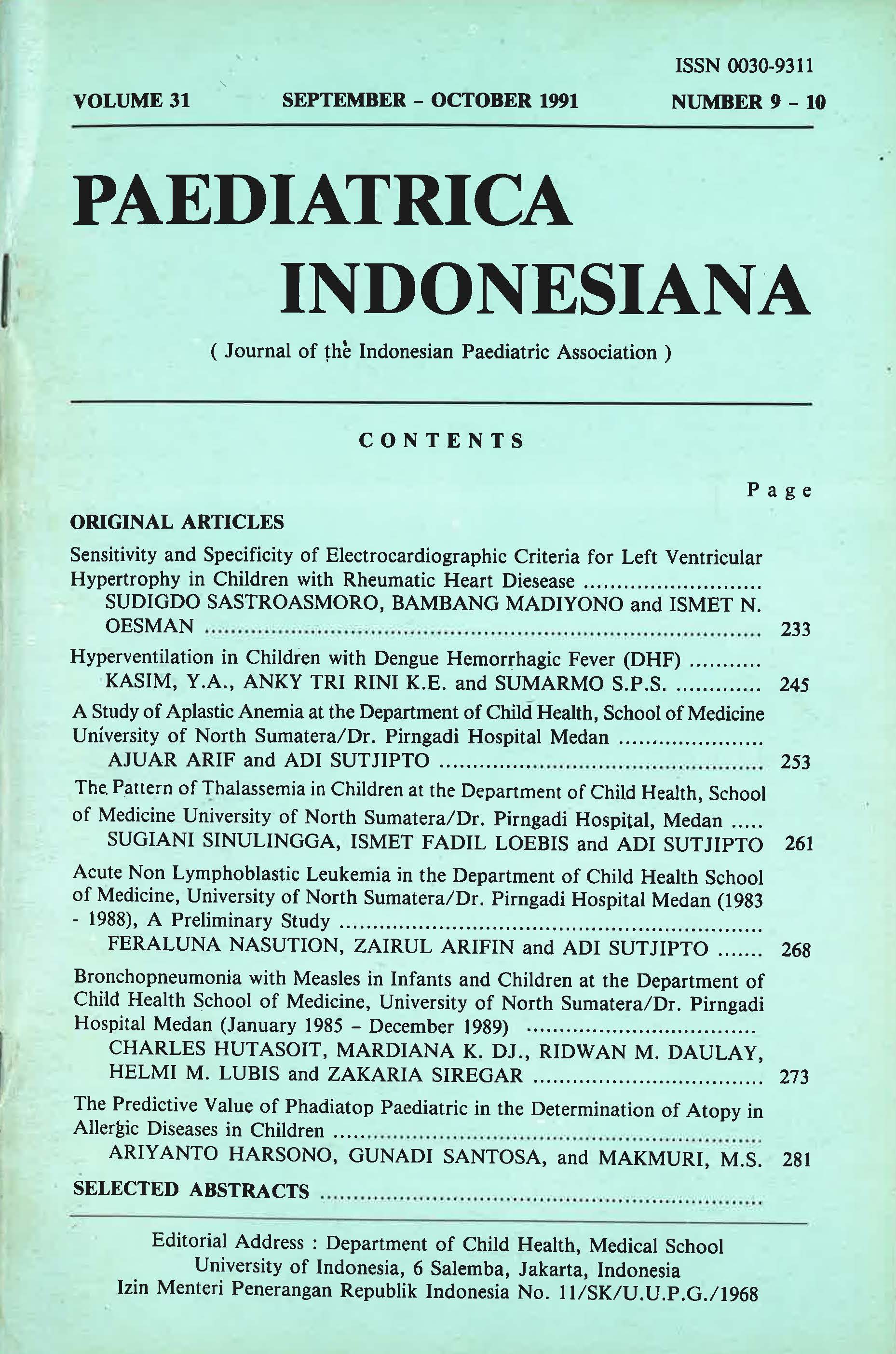The Predictive Value of Phadiatop Paediatric in the Determination of Atopy in Allergic Diseases in Children
Abstract
We obtained 28 patients with asthma bronchiole in this study. The presumptive diagnosis of allergy was made on the basis of history and physical examination. The positive result of the skin test to inhalant extracts and positive history of inhalant allergy add a confirmatory evidence in the diagnosis of inhalant allergy. The diagnosis of food allergy was judged by positive result in the provocation test. This study provided 15 patients with food allergy and 13 patients with food and inhalant allergy. House dust a1Jd mites were the most prevalent positive result in the skin test. While in the provocation test, egg ·and milk were found as the most prevalent food causing symptoms of allergy. The skin test predicted the atopy with an efficiency of 53.5%, While Phadiatop Paediatric predicted the atopy with an efficiency of 82.1 %. We concluded, as a screening procedure in allergy, the Phadiatop Paediatric is better than the skin test. Nevertheless the skin test has its superiority in the development of logical environmental controls and as a guide to immunotherapy in inhalant allergy.
References
2. SHAPIRO GO. Diagnostic methods for assessing the patient with possible allergic disease. In: Bierman CW, Pearlman OS, eds. Allergic diseases from infancy to adulthood. 2nd ed, Philadelphia: W.B. Saunders, 1988: 224-38.
3. FINNERTY JP, SUMMERELL S, HOLGATE ST. Relationship between skin prick test, the multiple allergosorbent test and symptoms of allergic disease. Clinical and experimental allergy 1989; 19: 51-6.
4. MANSMANN HC. Allergy test in clinical diagnosis. In: Bierman CW, Pearlman DS, eds. Allergic diseases of infancy, childhood and adolescence. Philadelphia: WB Saunders, 1980: 289-99.
5. TIPTON WR. Evaluation of skin testing in the diagnosis of lgE mediated disease. Pediat Clins N Am 1983; 35 : 785-94.
6. VAN ASPEREN PP, KEMP AS, MELLIS CM. Skin test reactivity and clinic!ll allergen sensitivity in infancy. J Allergy Clin lmmunol 1984; 73 : 382-6.
7. OWNBY DR. Allergy testing : in vivo versus in vitro. Paediat. Clins N. Am. 1988; 35: 995-1010.
8. PLETSCHER M, PEITREQUIN R, PERROUD S, FRU PC. Multiple RAST, a reliable method for screening of specific IgE in serum? Allergy 1988; 43 : 530-5.
Copyright (c) 2019 Ariyanto Harsono, Gunadi Santosa, Makmuri M. S.

This work is licensed under a Creative Commons Attribution-NonCommercial-ShareAlike 4.0 International License.
Authors who publish with this journal agree to the following terms:
Authors retain copyright and grant the journal right of first publication with the work simultaneously licensed under a Creative Commons Attribution License that allows others to share the work with an acknowledgement of the work's authorship and initial publication in this journal.
Authors are able to enter into separate, additional contractual arrangements for the non-exclusive distribution of the journal's published version of the work (e.g., post it to an institutional repository or publish it in a book), with an acknowledgement of its initial publication in this journal.
Published 2019-02-01













